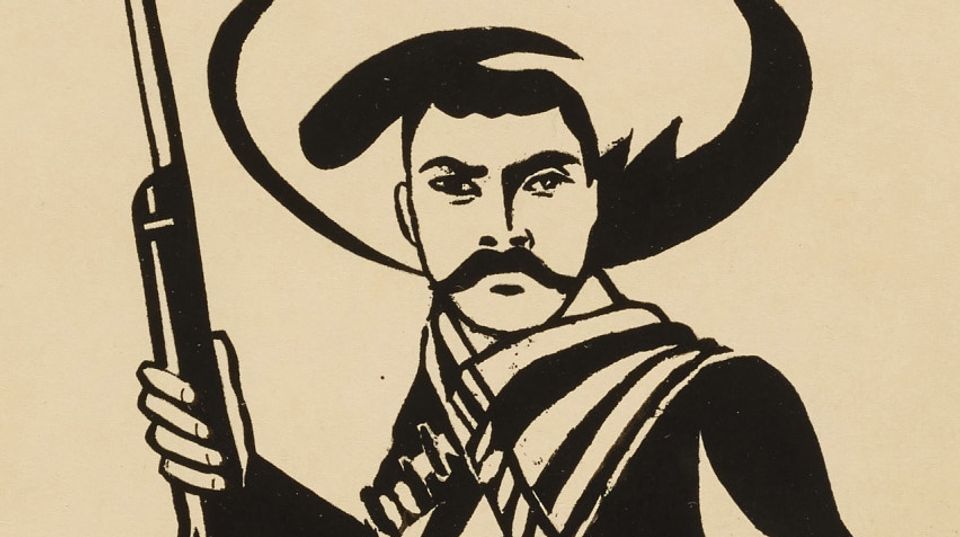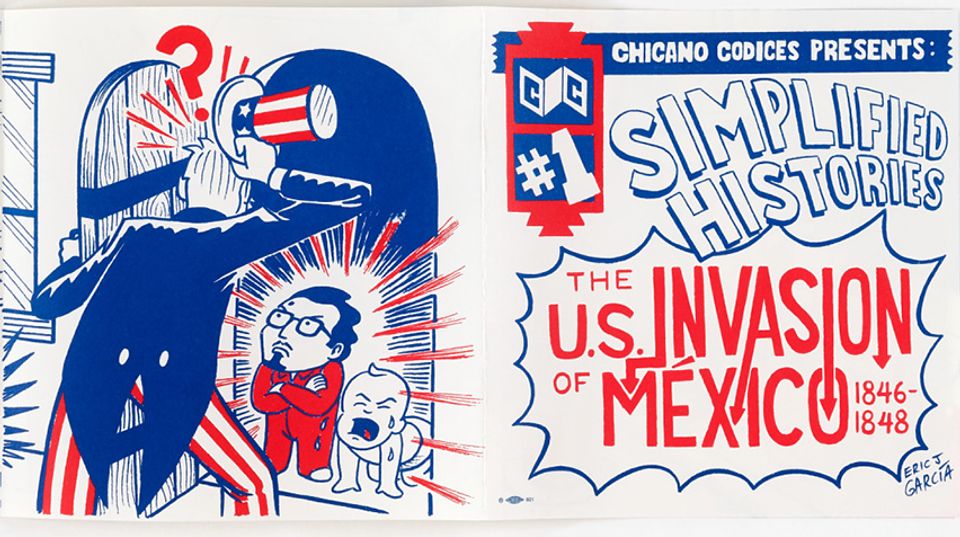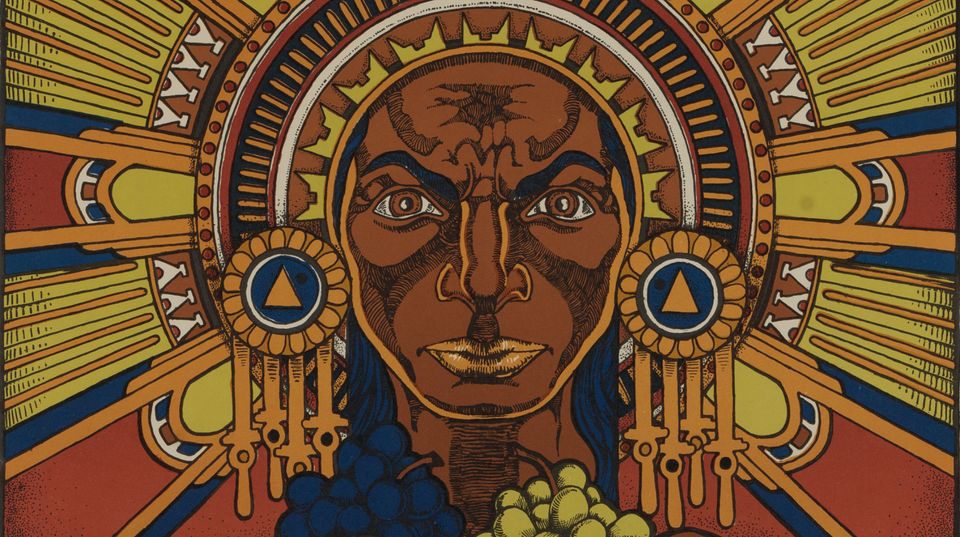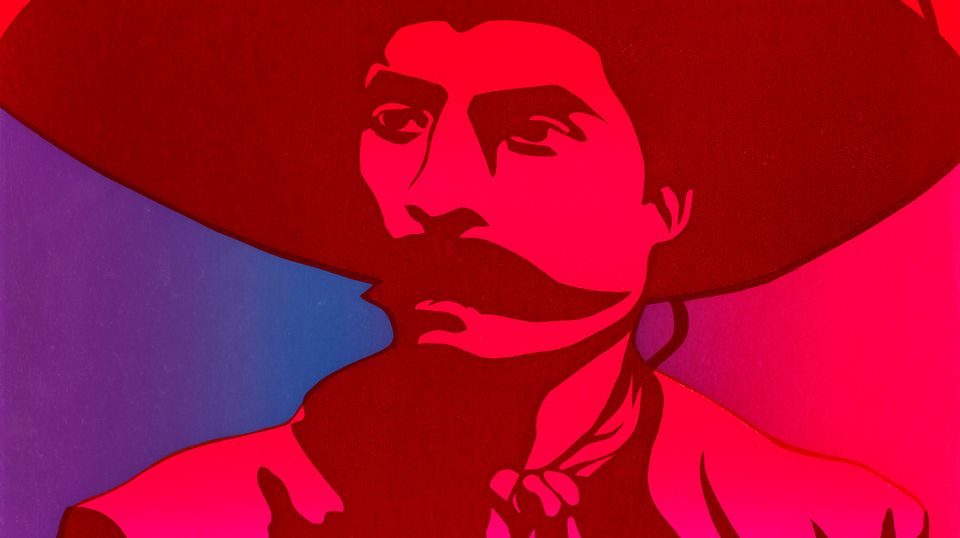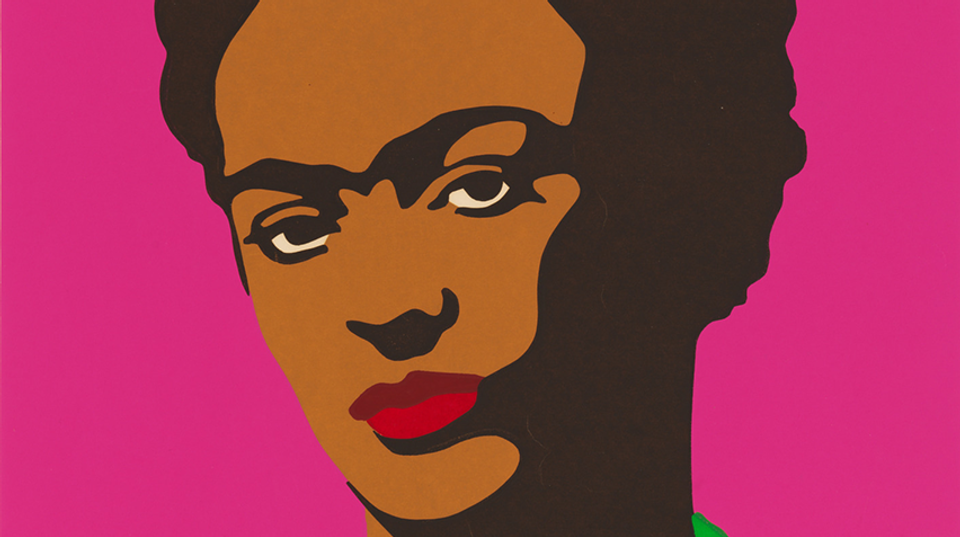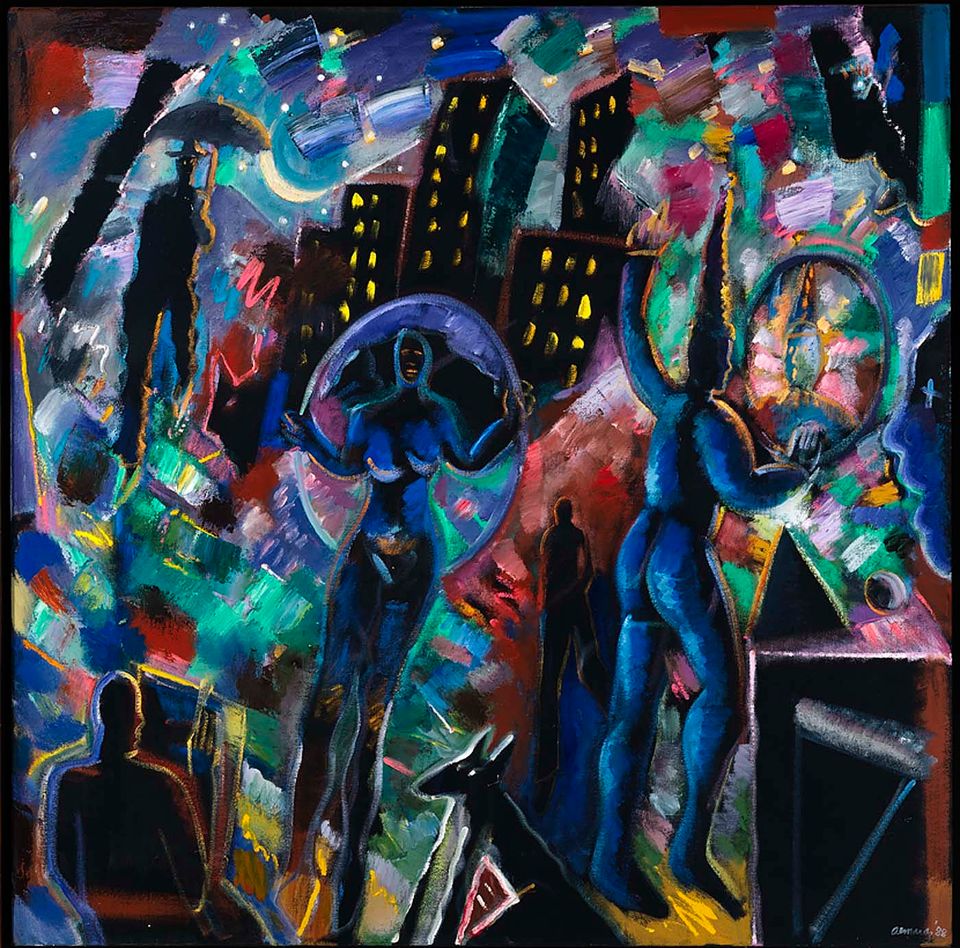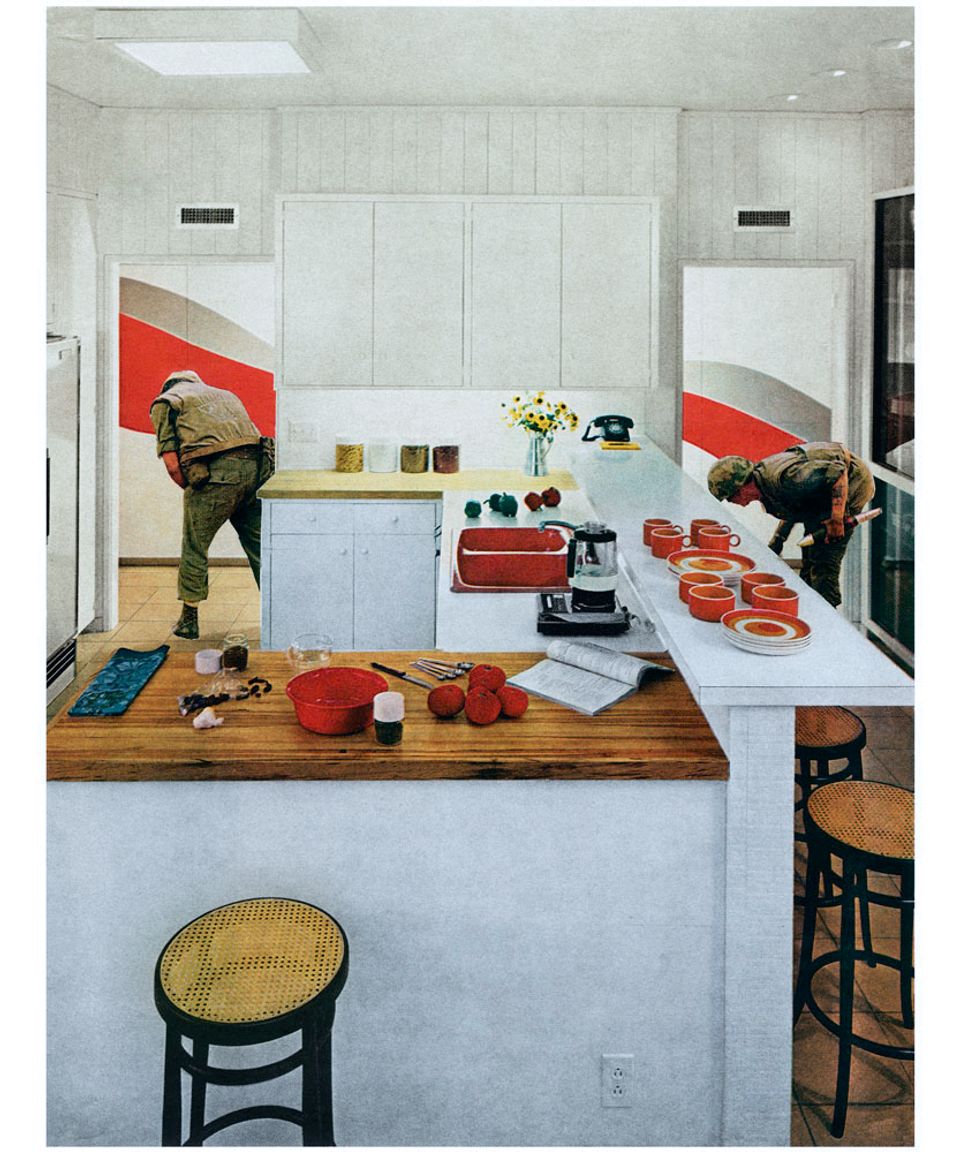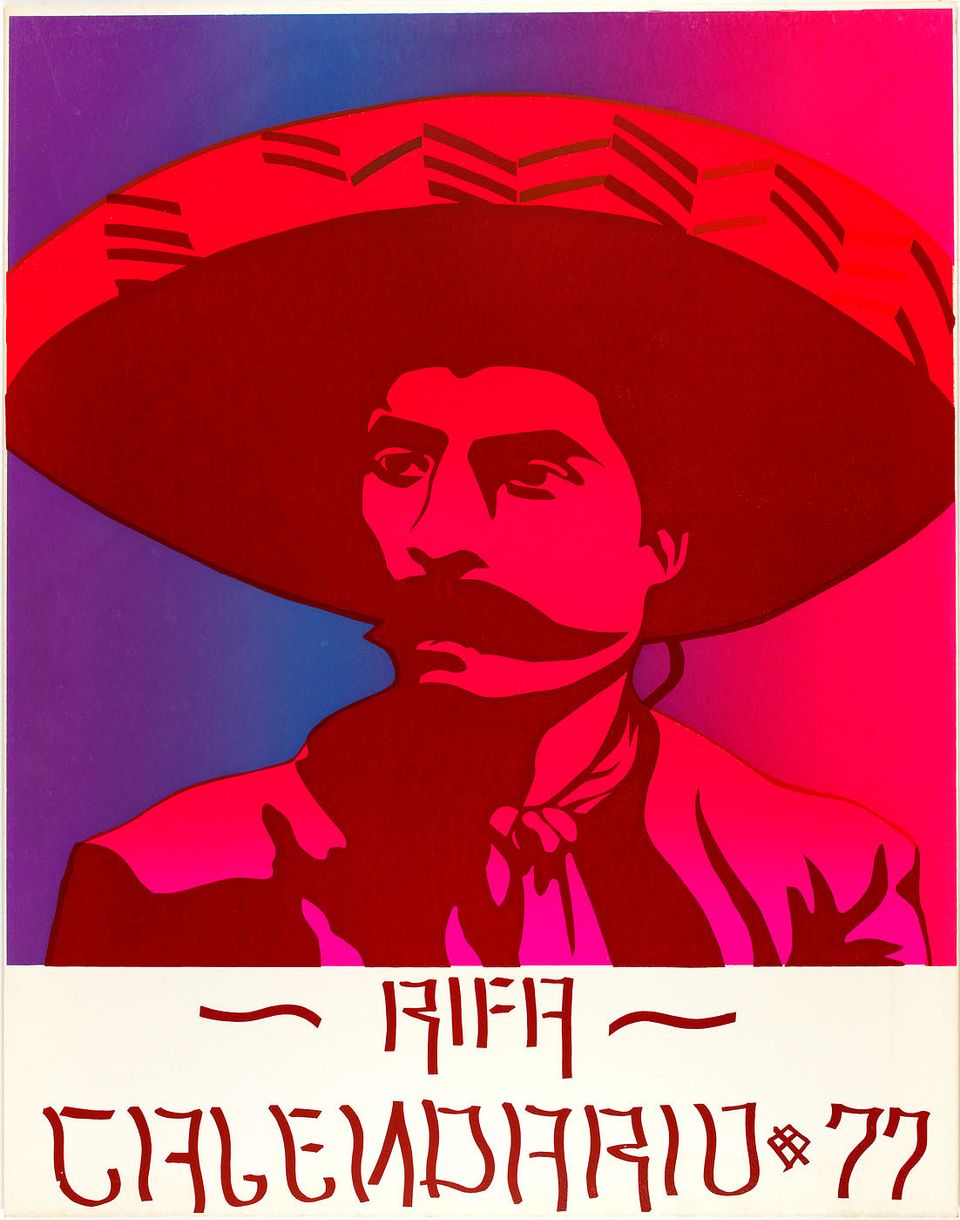Rupert García
- Also known as
- Marshall R. Garcia
- Rupert Garcia
- Born
- French Camp, California, United States
- Active in
- Oakland, California, United States
- Biography
Rupert García came from a family active in the creation and instruction of folk arts and traditions. After completing his service in the U.S. Air Force in Indochina, García attended the San Francisco School for the Arts on the G.I. Bill. As his education in art intensified so did his interest in politics. He joined Latino and minority movements in the Bay area protesting the disproportionate number of these groups being sent into battle in Southeast Asia.
García has proven himself to be not only one of the most important artists of the last twenty-five years, but an important political force as well. Much of his work has dealt with issues of racism and the mistreatment of Latinos in the United States. His style is direct and powerful; he seeks to be both forceful and readily accessible to a wide audience. Keeping these goals in mind, both García's graphic art and paintings display a skillful unification of the Mexican tradition of Rivera, Siqueiros and Orozco, with elements learned from European artists and those of the American Pop art movement. García's art has evolved stylistically throughout his career, but he has constantly maintained a strong balance of graphic and "fine art."
García has also played an important role in Latino art scholarship. He holds two M.A. degrees—one in studio art and the other in art history. He is the author of an important thesis on California Chicano Muralists and has published essays on a number of different subjects including the work of Frida Kahlo. García's continuing legacy constantly addresses the most important issues of contemporary society, both thematically and stylistically.
Therese Thau Heyman Posters American Style (New York and Washington, D.C.: Harry N. Abrams, Inc., in association with the National Museum of American Art, 1998)
Videos
Exhibitions
Related Posts
